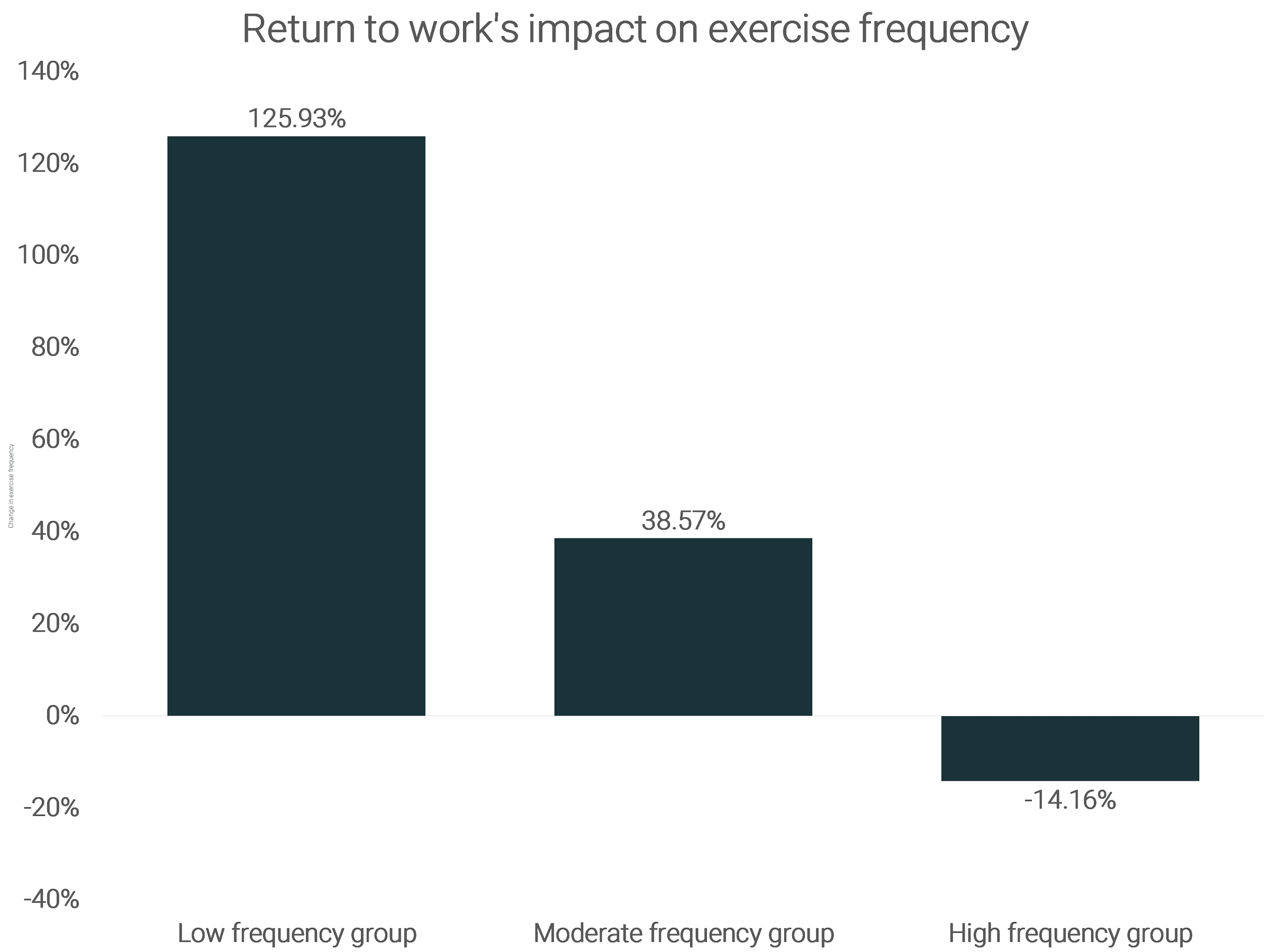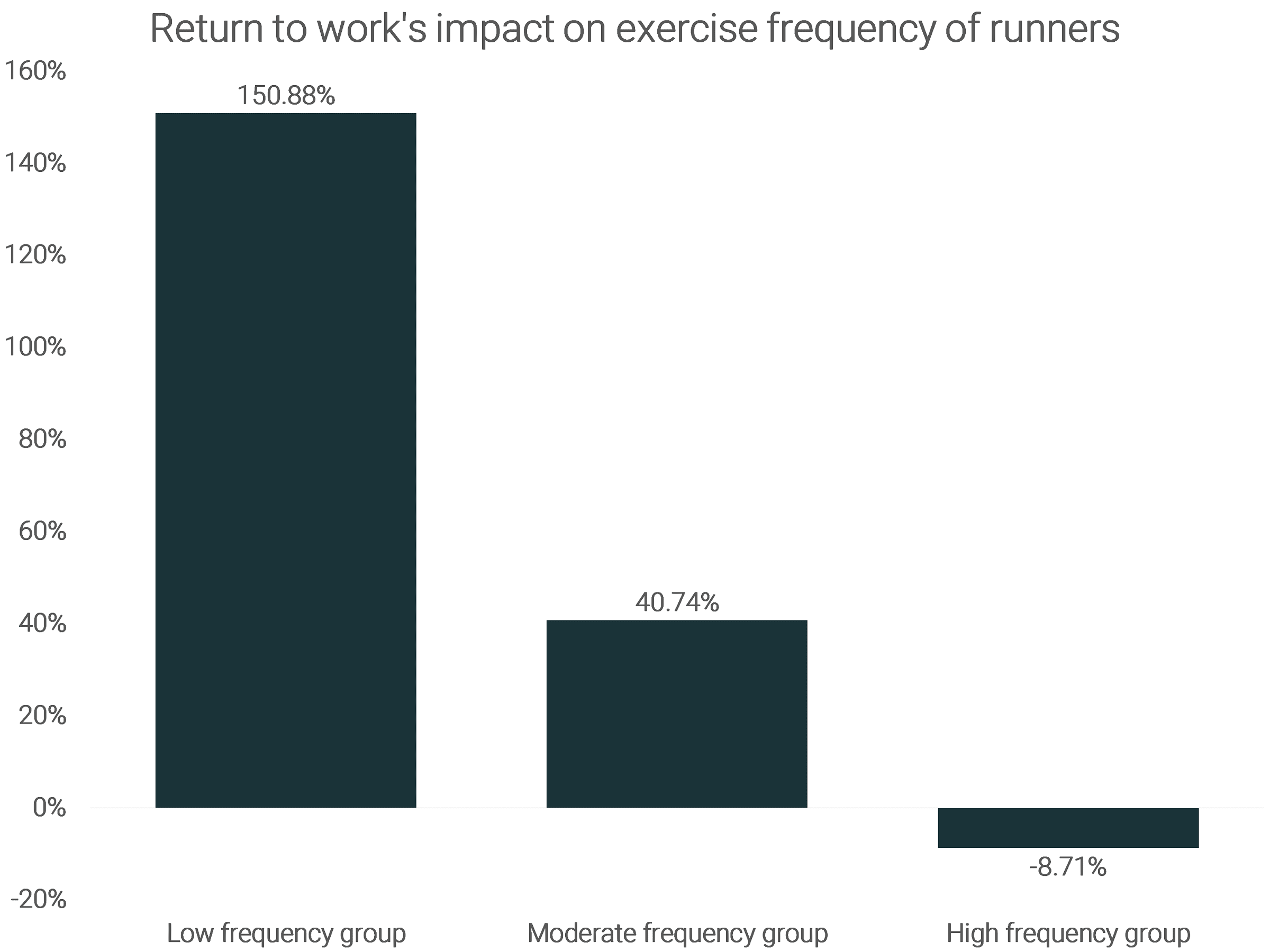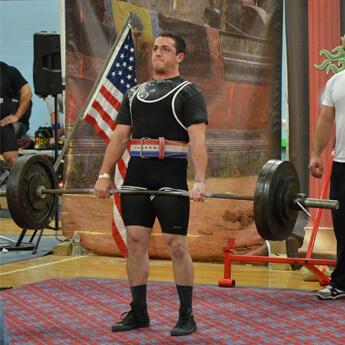Return to work creates exercise boom for least active [Study]
We wanted to understand how the exercise habits of people who were forced to work remotely during the pandemic were impacted by returning to the office full-time.
To do this, we surveyed 2,494 people who were working remotely during the pandemic about their exercise habits before and after returning to work.
Key findings:
Returning to work in the office full-time, after being forced to work remotely during the pandemic has resulted in:
- 59.52% of non-exercisers are actively exercising an average of 2.64 times per week since returning to work
- People who exercised 1-2 times/week have increased exercise frequency by 125.93%
- People who exercised up to 3 times/week have increased exercise frequency by 38.57%
- People who exercised 4+ times/week have decreased exercise frequency by 14.16%
Respondents who have returned to work full-time reported on how this pandemic-related event has impacted their exercise frequency.
For this study, we’ve defined multiple groups depending on their weekly frequency of exercise:
- Low frequency: 1-2 times / week
- Moderate frequency: up to 3 times / week
- High frequency: 4+ times / week
This event of “returning to work” has created a boom in exercise for those who exercised the least. Those that exercised up to 2 times a week increased their exercise frequency by 125.93%, going from 0.98 times / week to 2.22 times per week.

The moderate frequency group increased their exercise frequency 38.57%, going from 1.86 times to 2.58 times per week.
Those who maintained a high frequency of exercising while working remotely during the pandemic were the only ones negatively impacted by the “return to work”. They experienced a decrease of 14.16%, going from exercising 5.23 times to 4.49 times per week since returning to the office full-time.
Out of the respondents that were not actively exercising while working remotely, 59.52% said they are actively exercising now. This group of respondents who have begun exercising since returning to work in the office full time are now exercising 2.64 times per week on average.

While 3.91% of those that were exercising prior to returning to work, have now stopped exercising altogether.
Changes in exercise habits of runners
Running has been a major fitness trend during the pandemic, given it was one of the easiest ways to be active when other options like gyms or team sports were no longer feasible during the pandemic.
When looking at the exercise frequency of runners, we see that they follow many of the same trends. Runners in the low-frequency group saw an increase in exercise frequency of 150.88% while those in the moderate frequency group saw an increase of 40.74%.

Again, the only group to experience a decline in exercise was the high-frequency group, dropping by 8.71% since returning to the office full-time.
Conclusion
The pandemic-related event of returning to work in the office full-time signals a return to normalcy. It brings a familiar structure, routine, and lifestyle for many.
All of which has seemed to create significant growth in exercise rates for the remote workers who were the least active during the pandemic. Those who were exercising the most saw a decrease in exercise. Despite this, overall more people are experiencing the benefits of exercise since returning to work, whether they are engaging in strength training or cardio exercise.
Use of content
If you have any questions regarding the above findings, the following report, or are looking for interviews, please feel free to reach out to Nick Rizzo, the Fitness Research Director here at RunRepeat (nick@runrepeat.com).
Feel free to use any of the findings, data, and graphs from this report. We just ask that you link back to this report when doing so.
 Hiring remote: Content writer / review specialist in
Hiring remote: Content writer / review specialist in 